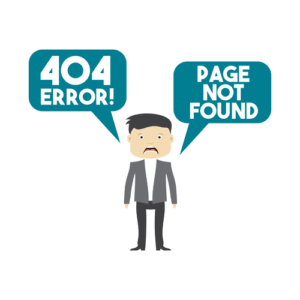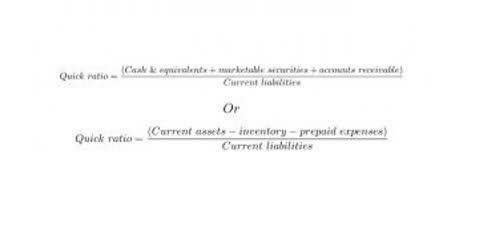

Investing in ledger technology and automation is a trend among finance executives. About 70% of companies see significant returns by automating a part of their accounting. Unlike FIFO, LIFO assumes that the most recently purchased or produced items are sold first.
How The Second City expedited expense management and gained financial control with Ramp
For instance, a company might pay an annual premium in January for coverage extending through December. Rather than recording the entire expense in January, the business would allocate one-twelfth of the premium each month. By matching utilities with the month they are consumed, the business shows a clearer picture of monthly operating costs.
- Regularly reviewing and updating them to align with current financial accounting standards and regulations is essential.
- We collaborate with business-to-business vendors, connecting them with potential buyers.
- It helps to provide a more realistic and accurate picture of your company’s current liabilities and overall financial performance at any given time.
- Under this method, the cost of goods available for sale is divided by the number of units available, resulting in a weighted average cost per unit.
- If a company anticipates a certain percentage of its sales will be returned, it must recognize this as an expense in the same period the related sales are recorded.
- Sticking to this principle shows a firm keeps accurate records as per U.S. standards, critical for audits.
The Best Finance Dashboard: How To Find One For Your Startup
For example, if a business purchases a patent for $100,000 with a useful life of 10 years, it would amortize $10,000 each year, reflecting the asset’s usage over time. This process mirrors depreciation but is specifically used for intangible assets. Fyle’s AI checks if expenses align with preset business rules before submission, flagging potential unearned revenue fraud or duplicate entries automatically. It ensures compliance with features like automatic receipt attachment, cloud storage, and easy searchability.
Why is the expense recognition principle important?
By adhering to this principle, a company ensures that expenses are systematically and consistently reported. For expense recognition principle example, rent payments are often made in advance, but under the Periodicity Principle, the expense is allocated over the period to which the rent pertains, not just when the payment is made. This temporal distribution of expenses helps in achieving a periodic match with revenues, thereby enhancing the comparability of financial statements over time. The expense recognition principle states that expenses should be recognized in the same period as the revenues to which they relate. If this were not the case, expenses would likely be recognized as incurred, which might predate or follow the period in which the related amount of revenue is recognized.
- Expenses are based on one of the approaches just described, no matter when payment occurs.
- Investors and lenders will request reviewed financials (and sometimes audited ones) before they provide funding to business owners.
- However, should you recognize the machine’s total cost every time it produces a saleable unit?
- In this method, you’ll record expenses in the same period as the revenue they generate.
There are two primary methods for recognizing expenses:
- While it might sound complex at first, understanding this principle is simpler than you think.
- Fluctuating exchange rates can complicate expense recognition, particularly when there’s a time lag between incurring an obligation and making payment.
- This spend management makes sure that debts are listed in the same period as the money made, like expenses and revenues from grants noted at the same time.
- Among these, expenses play a critical role in painting an accurate picture of a company’s financial health.
- This ensures that any gains or losses due to exchange rate fluctuations are recognised accurately.
This reduces the time and effort required to verify financial records and ensures that audits are completed with minimal disruptions to day-to-day operations. For example, a retailer might incur significant advertising and inventory costs in October to prepare for the holiday shopping season in December. If these expenses are recognised in October, they could misrepresent profitability for that period. Many businesses deal with transactions that span multiple periods, involve various components, or include intricate cost structures. When implemented effectively, this principle provides a clear picture of Certified Bookkeeper profitability, prevents misalignment between costs and revenue, and supports better decision-making.


Otherwise, the auditors will refuse to render an opinion on the financial statements. Employ accrual accounting to record expenses when they occur, not when cash is exchanged, for a more accurate financial depiction. There can be some exceptions in specific situations, following guidelines set by accounting standards boards. For instance, research and development costs might be expensed immediately or capitalized (recorded as an asset) and amortized over time depending on the specific circumstances.




The importance of adhering to established guidelines cannot be overstated when it comes to expense recognition. These rules help maintain consistency across reporting periods and among different entities, allowing stakeholders to make informed decisions based on reliable data. This method is simpler but can provide a less accurate picture of a company’s financial position if there are significant delays between the time an expense is incurred and when it is paid. In this example, the only expense incurred was the purchase of raw materials. In reality, you’ll have other expenses to account for, such as operating expenses. An effective expense management process will help you identify and record all these numbers accurately.


This is the most straightforward method and applies to expenses with a clear cause-and-effect relationship to a specific accounting period. This principle is fundamental in preparing financial reports that comply with GAAP and provide meaningful insights into a company’s operations. Deferred expenses are common in scenarios where costs extend beyond a single accounting period. Suppose employees earn wages in December, but the company pays them in January.
